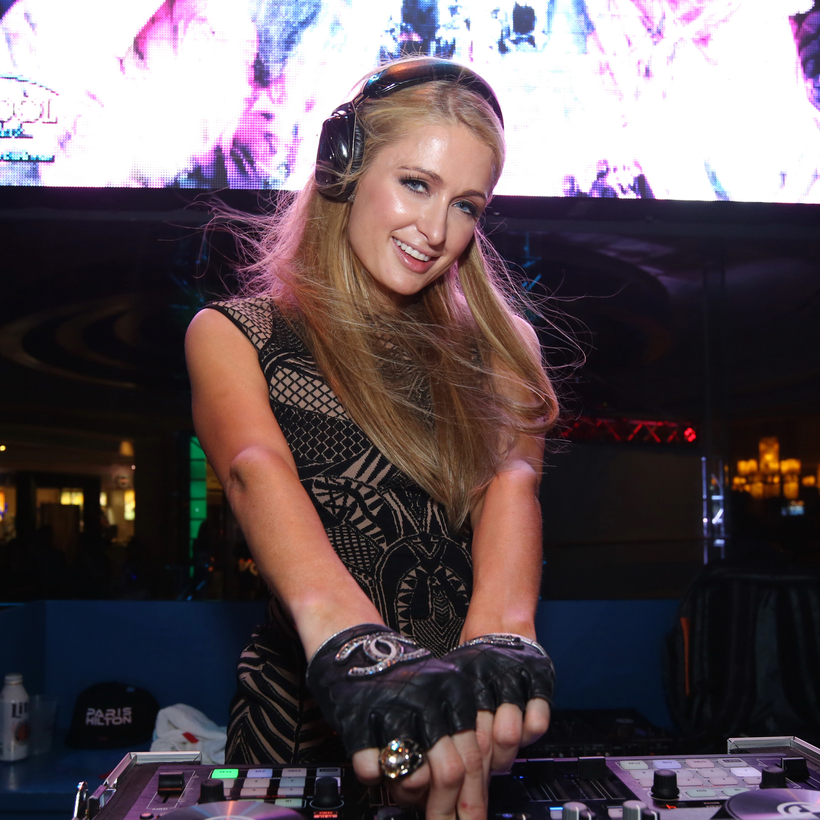It’s two A.M. at Paul’s Baby Grand, Paul Sevigny’s nightclub in New York’s Tribeca, and Orson, a tall, blond, 29-year-old D.J., is standing behind the decks. For the club’s “French Tuesday” night, he’s playing “Stayin’ Alive,” by the Bee Gees, which he follows with “Gangsta’s Paradise,” by Coolio. Next to me, a blonde woman says, “Orson tonight.” To which her friend responds, “He’s so handsome.”
In a career-confused generation where no one can decide whether they want to be a paralegal or an actress, a striver or a lie-flatter, one thing everyone below age 35 definitely wants to be is a D.J. “There are a lot of Peter Pans out there,” the 32-year-old data engineer Benjamin Brown says. “Boys who don’t want to grow up.”
These are not the D.J.’s spending every waking hour putting together playlists, going to music school, doing whatever it takes to make it big. For the most part, they are D.J.’s spinning tracks for a meager $200 a night, as long as they can add a couple of friends to the guest list.

And they’re everywhere you turn. Hannah Bronfman, daughter of Edgar, has for years now been a D.J., a career she couples with “author” and “fitness expert,” according to her Instagram bio. John Casablancas’s son, and Julian Casablancas’s brother, Fernando, calls himself a model, artist, and, of course, D.J. The socialite and clothing designer Harley Viera-Newton, whose West Village wedding was featured in Vogue, is also known to make the rounds on the New York party-D.J. circuit.
Then there is New York’s Syrian Jewish crowd, many of whose young generation claim to be musical artists of some sort. (One family recently flew out the German house-and-techno D.J. &ME to their New Jersey summer home.)
D.J.-ing has been the go-to side gig for some time now—see Goldman Sachs C.E.O. David “D.J. D-Sol” Solomon, or Paris Hilton, a former resident at the popular Ibiza nightclub Amnesia. The difference being, of course, that these guys have other things going for them.
Nevertheless, “it’s the hot new thing now,” the marketing associate Sasha Peeters, 26, tells me.
“Everyone wants a D.J. friend,” one 23-year-old artist says. “You get invited to parties, and you’re on the guest list, which means you don’t wait in line.”
“It’s a way to hang out with your friends,” the insurance broker and D.J. Skinny M says, “and bring people together.”
Where an older generation’s privileged and bored took up polo, ours have taken up something considerably less effortful—at least in their way of doing it. All you need is to download a few songs onto a USB stick, buy a $339 Traktor turntable, and start playing at friends’ houses. Algorithms in streaming apps have made music selection easy—if you like listening to Marvin Gaye, Spotify will recommend Bill Withers. Minimal skill or time necessary. And nightclubs love a cheap act.
The reviews are mixed. While baby-boomers tend to be skeptical—“I’ve just never understood how D.J.-ing is a real career,” the banking executive Marco Grassi, 62, tells me—most millennials play along (even if they don’t get it, either).
“Everyone wants a D.J. friend. You get invited to parties, and you’re on the guest list, which means you don’t wait in line.”
It wasn’t always like this. D.J.-ing has roots in New York’s 1970s nightlife scene, when David Mancuso would organize his legendary loft parties to help pay his rent at 647 Broadway. He started pairing a great sound system with an extensive vinyl collection, playing out records for 8 to 10 minutes before changing a track.

Mancuso also inspired the then teenager Larry Levan, who coined the concept of “music that would never stop.” Levan would go on to open the popular nightclub Paradise Garage, on New York’s King Street, in 1977. In 1982, to celebrate people like Levan, Michael Cleveland produced the song “Last Night a D.J. Saved My life.” The nonstop-dancing era had begun—La Haçienda, in Manchester, opened its doors that same year; Palladium, in New York’s East Village, was converted into a dance-music nightclub soon after. And the D.J.’s held the keys to this new kingdom.
“Back when I was at university,” the fashion executive Deidre Stuart, 53, said to me, “we’d travel down from Edinburgh to La Haçienda. College was divided between those who were into house music and those who weren’t.”
Fast-forward to today, when to call house music mainstream would be an understatement—it’s the equivalent of what pop was in the 2000s and hip-hop in the 90s. Ray-Ban launched a collection of sunglasses with the smoking-hot South Korean D.J. Peggy Gou. Diesel recently announced it’s hosting a free 17-hour rave in London. Today’s headliners—Jamie Jones, Carl Cox, Seth Troxler—fly around the world in private planes, headed to festivals filled with hundreds of thousands of adoring fans.

While D.J.-ing got its start on the gritty sidelines, its move to the mainstream has made everyone think they can have a go at it. “Now anyone can be into music, download music,” the Burning Man headliner and Circoloco D.J. Carlita tells me. “It’s become accessible. Which means you get a lot more D.J.’s.” And not all of them are good.
Take Marjorie Gubelmann, who spins tracks at many of New York’s fashion parties. The blonde, carefully groomed socialite looks fabulous at all times, but a discerning listener will observe that she switches out a rotating list of songs from the Top 40 chart.
“Finding a good D.J. is hard nowadays,” the 25-year-old creative director Jade Alexandre says. “Lots of people do it, but few are any good.”
“It’s become accessible. Which means you get a lot more D.J.’s.”
Meanwhile, far away from headliner productions and Manhattan cocktail lounges, the D.J.’s from back in the day—Little Louie Vega, DJ Harvey—are still out there. Last month, Harvey played at a Halloween party in Midtown West, soaking in sweat yet spinning with precision as revelers throbbed around him in the dark.

At the regular parties hosted by ReSolute in different locations around Brooklyn, attendees reference Levan, Mancuso, and the days of yore often. At these parties, D.J.’s still follow the old mantra: Respect the music. Play a song out. Play vinyl. Transition seamlessly.
“The more clubbing becomes mainstream, the more D.J.’s become superstars,” the producer John Swing tells me. “There’s lots of phonies around, unfortunately. And no one seems to be able to tell the difference.”
Elena Clavarino is the Senior Editor for Air Mail


